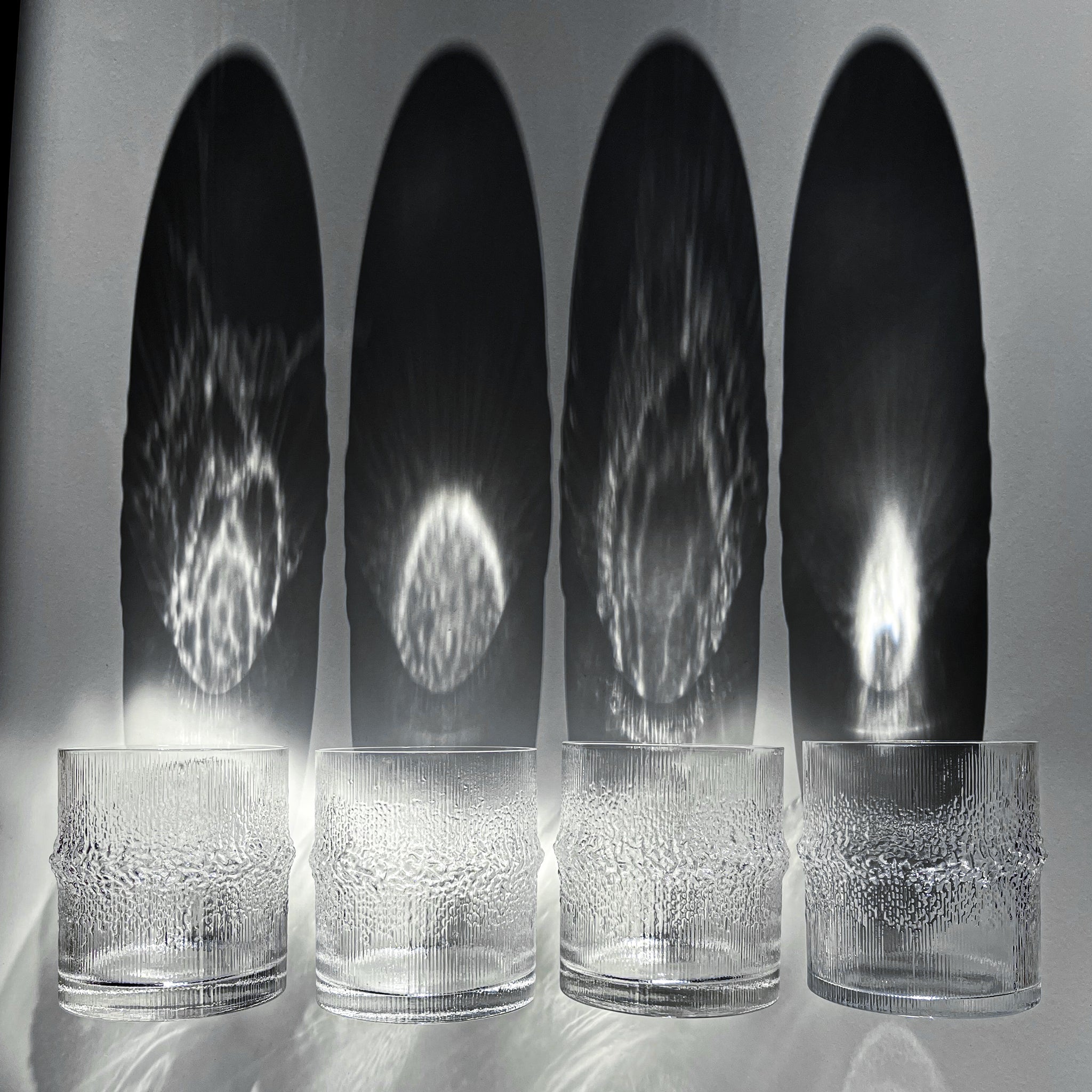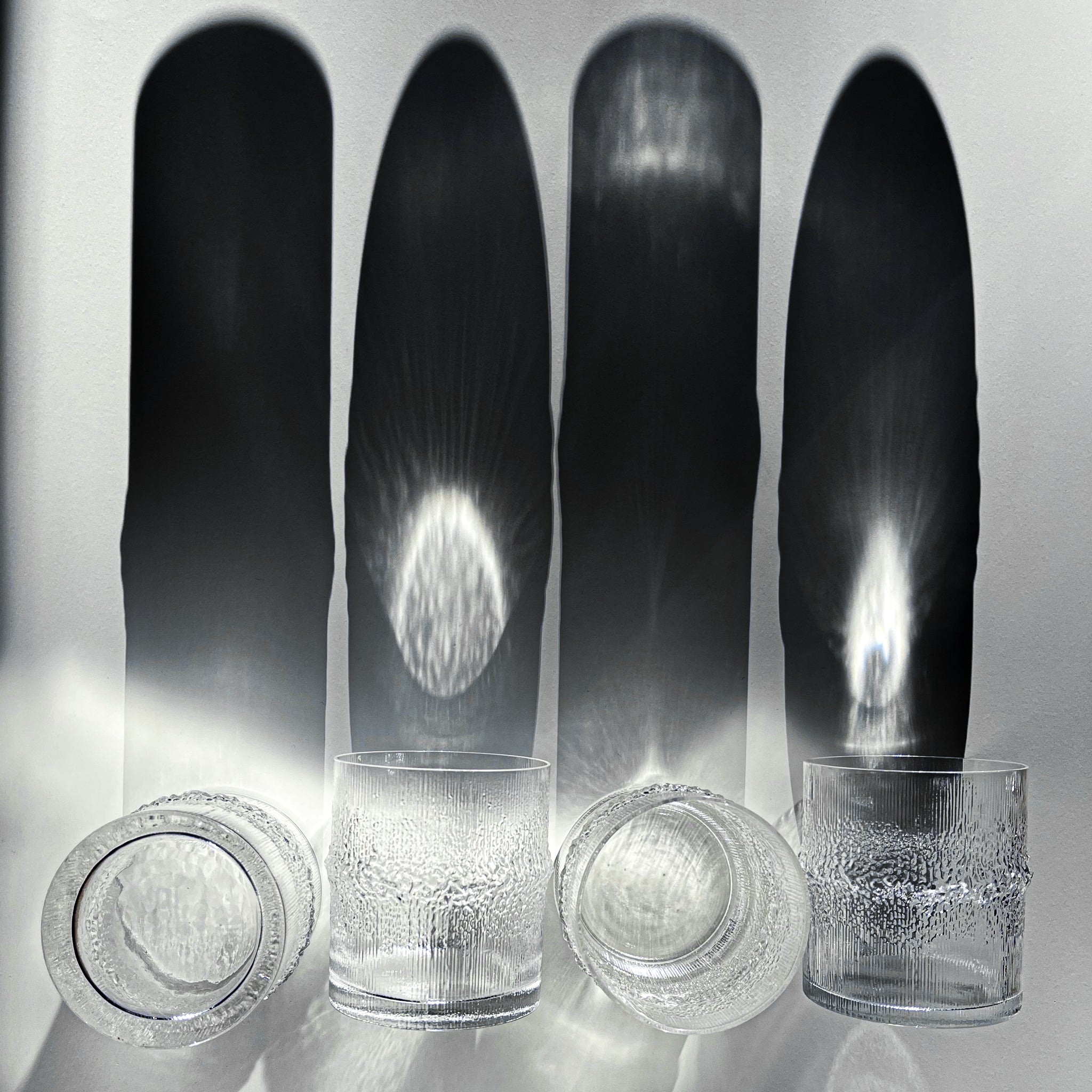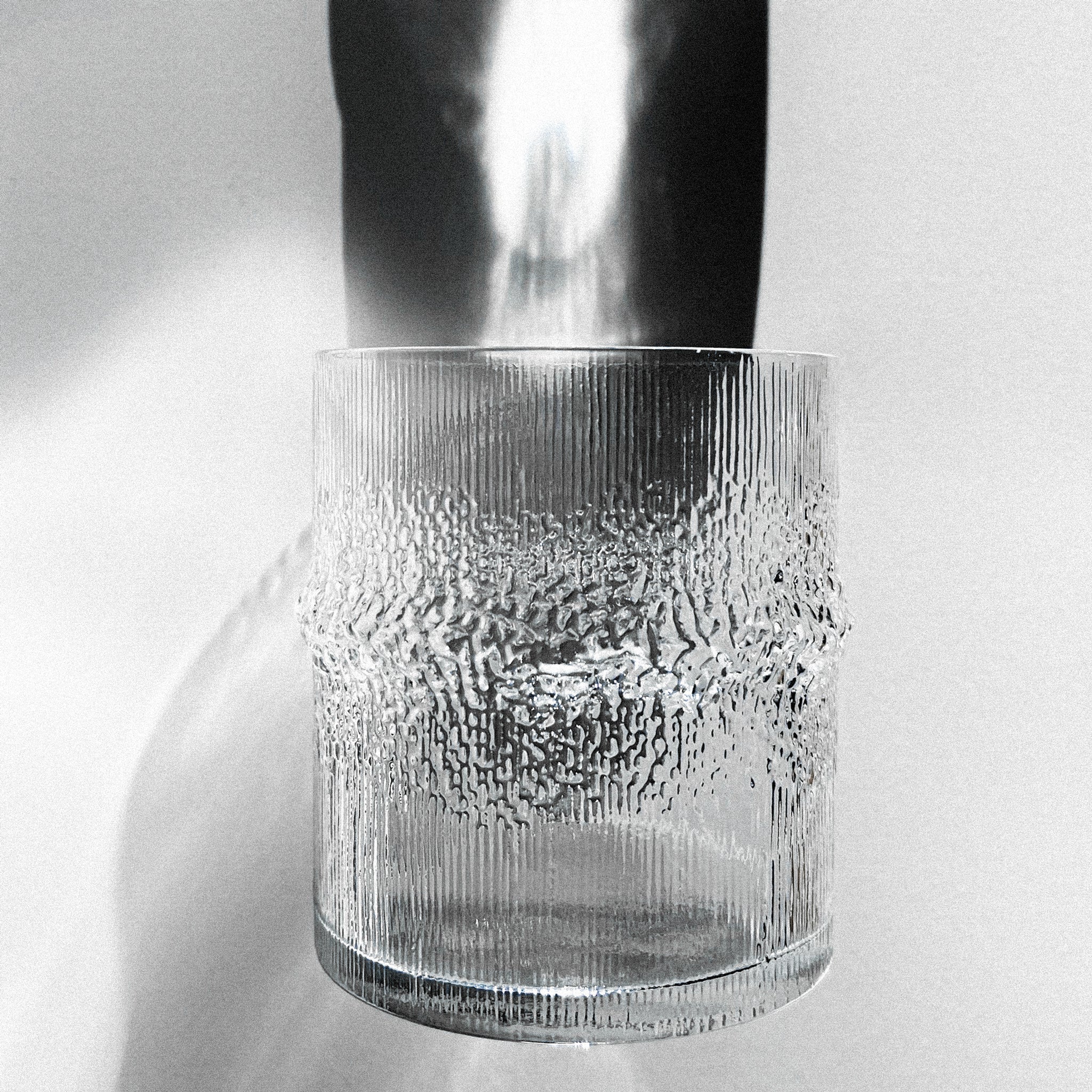Set of 4 Niva whisky glasses by Tapio Wirkkala for Iittala, Finland, 1970s.
Each Niva glass is a study of landscape in motion — hand-blown and pressed into a hand-carved mould that captures the texture of flowing water and melting ice. Designed by Tapio Wirkkala for Iittala, the series translates the Nordic environment into glass: tactile, rhythmic, alive.
Each glass is individually crafted, resulting in subtle variations in pattern and in the thickness of the base — traces of the handmade process that make every piece unique. Its textured surface refracts light like ripples across thawing ice, while its weight gives it an elemental, sculptural gravity.
Objects that hold more than liquid — they hold reflection, rhythm, and the quiet pulse of northern light.
Only one set available.
OBJECT SPECIFICATIONS
PRODUCT: Set of 4 Niva whisky old-fashioned glasses
DESIGNER: Tapio Wirkkala
MANUFACTURER: Iittala
ORIGIN: Finland
PERIOD: 1970s
MATERIAL & TECHNIQUE: Pressed glass | hand-blown into a hand-carved mould
COLOR: Clear
TEXTURE: Texture of water in motion / melting ice-like relief, signature of the Niva series
CONDITION: Excellent condition — unused
DIMENSIONS: (+/–) Height: 9.5 cm; Diameter: 8.5 cm

Tapio Wirkkala
A pioneer of 20th-century design, Tapio Wirkkala (1915–1985) transformed everyday objects into lasting icons. No other designer captured the northern landscape as a material experience quite like him. His glassworks — carved like wind over snow, melting into glacial textures — seem to hold breath rather than boast.
With Wirkkala, glass forgets its transparency. It thickens, fractures, freezes — like a lake caught in the moment before thaw. His glass objects, designed for the Finnish company Iittala, does not imitate nature — it distills it. Every ripple, bubble, and edge recalls glacial forms not as decoration, but as memory in solid state.
Today, Wirkkala’s textured glass pieces are highly prized by collectors and design lovers worldwide. They represent a perfect synthesis of art, design, and nature, influencing generations of glassmakers. His works serve not only as functional tableware or decorative objects but also as timeless art pieces embodying the spirit of Scandinavian and Nordic modernism.


